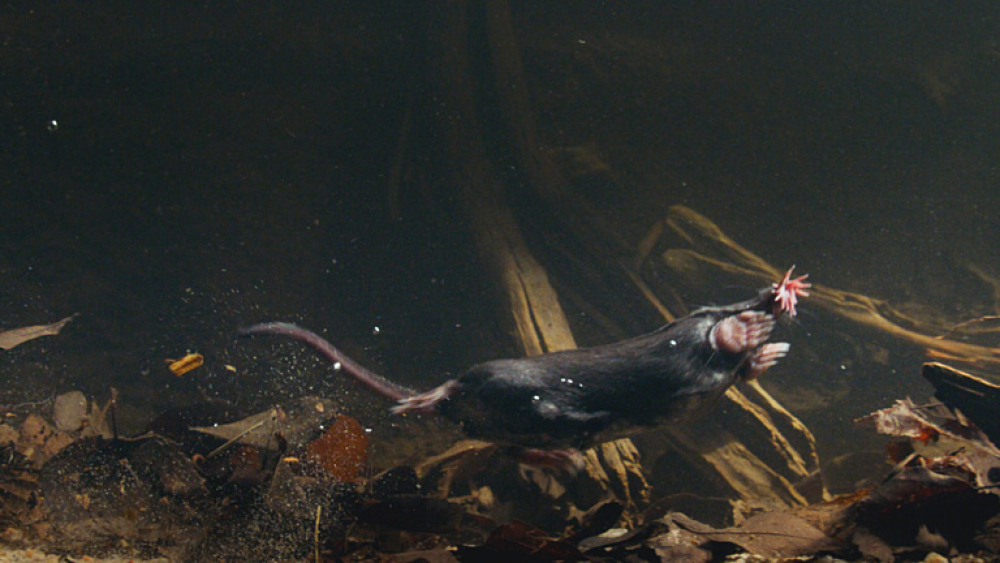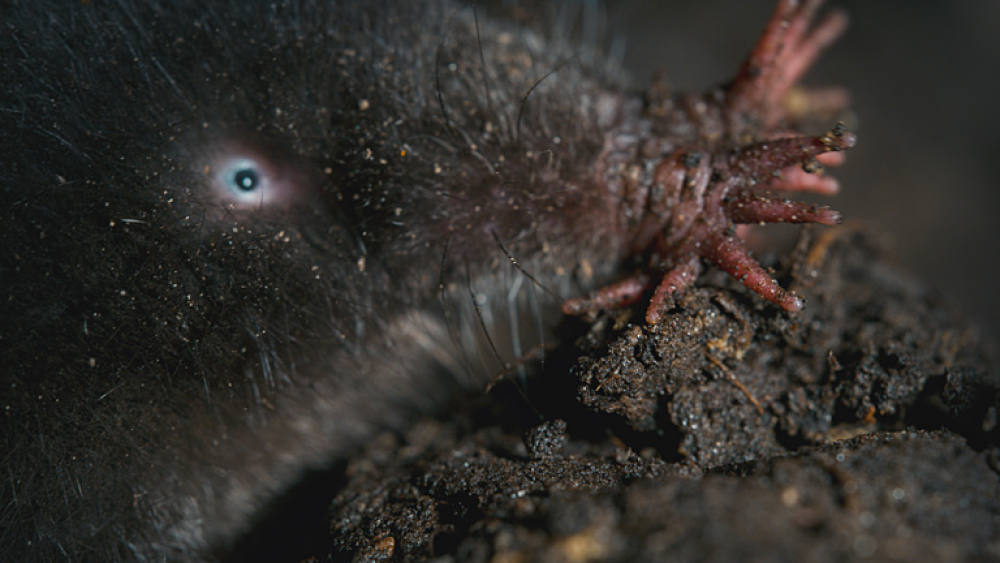The star-nosed mole is a mammal that does exactly what it says on the tin, sporting a bizarre snoot that has 22 fleshy tentacles in an astral arrangement. The flapping mechanism can do more than just smell, being 100 times more sensitive than our fingertips, but its olfactory skills are not to be sniffed at – being capable of blowing bubbles so it can detect the odor of prey even when underwater.
The star-nosed mole recently starred (pun intended) in the latest series from David Attenborough and BBC Studios, Mammals. The series tracks some incredible animal behaviors, including world-first footage of a leopard hunting roosting baboons at night, and a group of wolves that have reclaimed a habitat riddled with landmines, but the video that really got the IFLS team talking was that of the star-nosed mole.
What is a star-nosed mole?
The star-nosed mole (Condylura cristata) is a mole species that’s famous for its celestial snoot, looking a bit like a hand is stuck to its face. They share a lot of characteristics with other moles in the Talpidae family, but none of those moles’ noses hold a candle to the star-nosed mole.
What do star-nosed moles eat?
Star-nosed moles eat earthworms, nematodes, and insects primarily, but they do also branch out to larger prey items like crustaceans, mollusks, and even small fish. They have to eat around twice their weight in food each day, making it dead handy that earthworms have a habit of falling into the network of underground tunnels star-nosed moles primarily live in.
These moles are also rapid eaters, capable of eating bugs in less than two-tenths of a second and deciding if they want to eat something or not within 8 milliseconds.

When spring floods their underground tunnels, star nosed moles show off their swimming skills.
Image credit: BBC Studios
In Mammals, we see that these tunnels can flood in spring, but the giant digging utensils that are star-nosed mole hands can be repurposed as excellent flippers, helping them to move through flooded tunnels without drowning. The evolution of their noses comes in handy here, too, as they’ve adapted a way to smell their prey underwater.
The star-nosed mole’s nose
These moles can use their noses to push bubbles of air in and out so that they can smell underwater, which has made them highly proficient at hunting in lakes and streams. According to a 2017 conference presentation, the nose contains more than 100,000 nerve fibers within its fleshy tentacles – five times the amount found in the human hand, despite being spread out across a distance equivalent to your fingertip.

Star-nosed moles have weak eyesight.
Image credit: BBC Studios
Do star-nosed moles have eyes?
Star-nosed moles do have eyes, but their vision is weak. However, it seems what they lack in sight they make up for with the fovea – the 11th ray located at the bottom of the star nose that has the largest representation in the mole’s brain, despite being small with just a few sensory organs on its surface. It’s the most used ray when investigating prey, helping them to build a picture of their environment with a wibble of the nose when the eyes just aren’t cutting it.
Where do star-nosed moles live?
Star-nosed moles live in the eastern half of North America, where they scuttle through tunnels in forests, marshes, and mountainous habitats. As semi-aquatic critters they’re fond of wet environments, and it seems they’re doing just fine, classified as being of Least Concern by the International Union for Conservation of Nature’s Red List Of Threatened Species.
Now, where do I get one of these noses?
Source Link: The Star-Nosed Mole’s Snoot Is 100 Times More Sensitive Than Your Fingertips